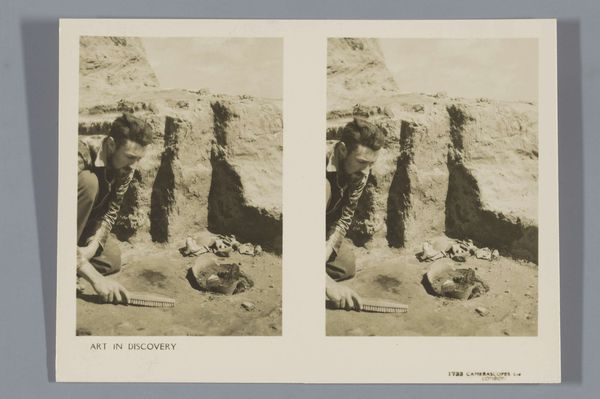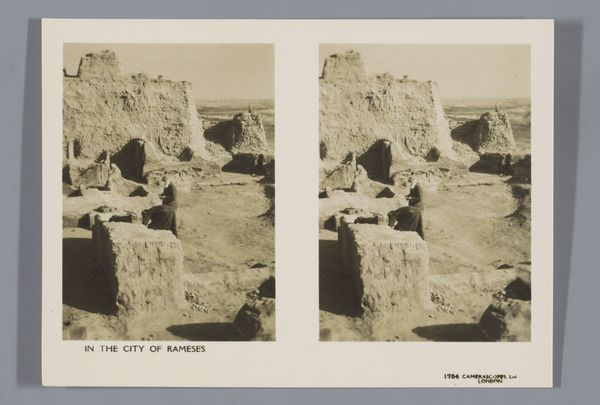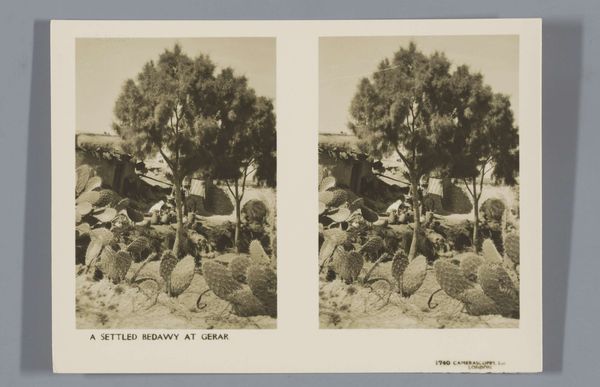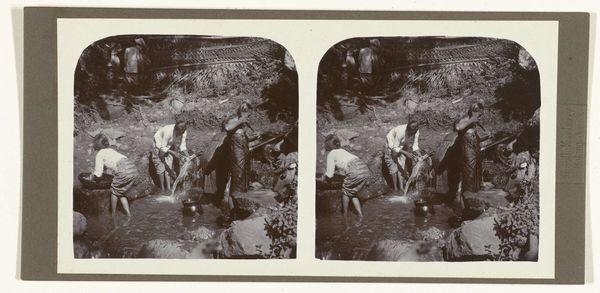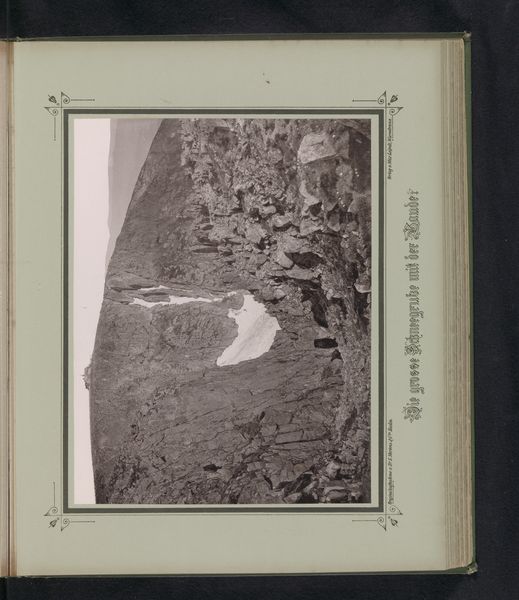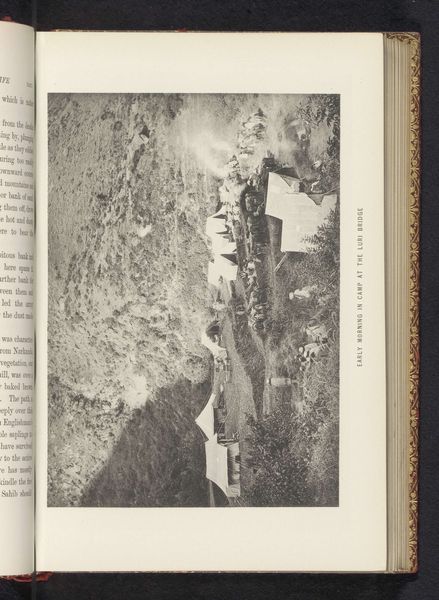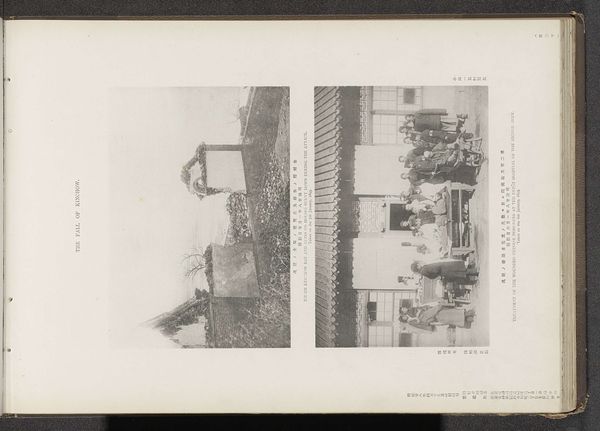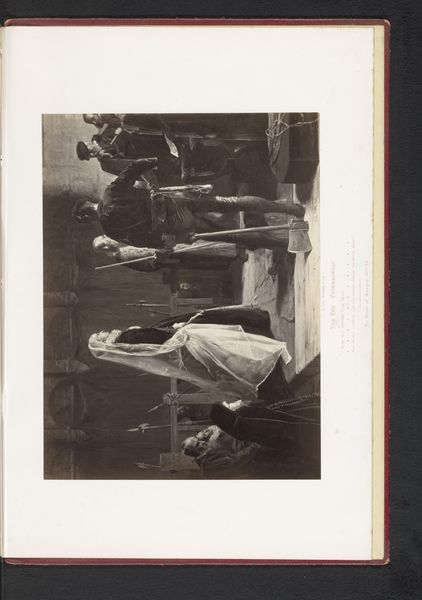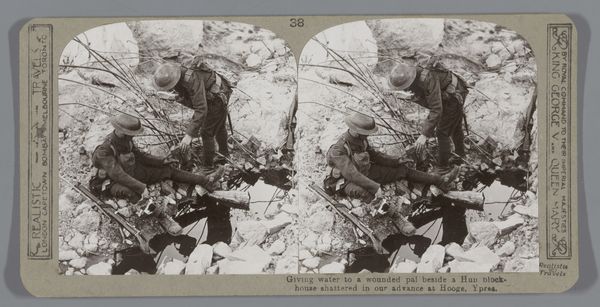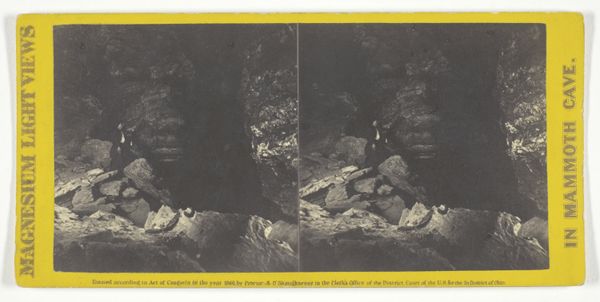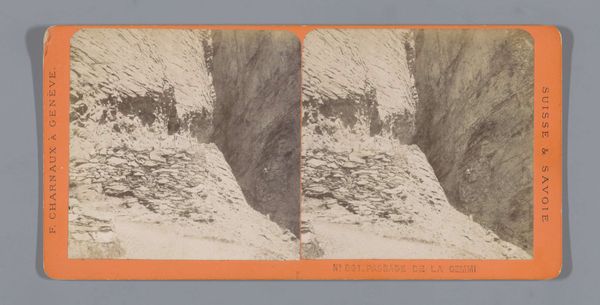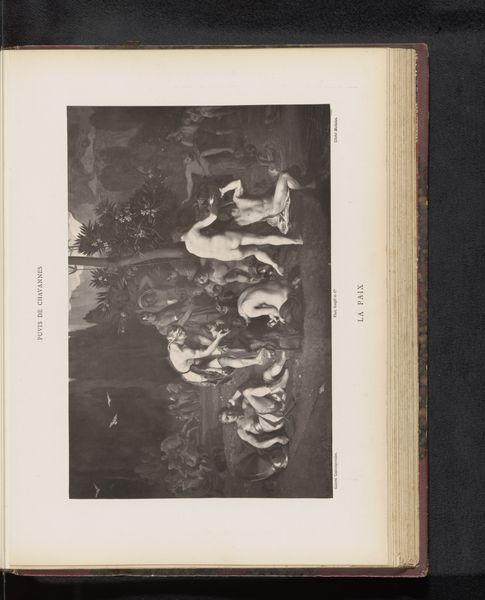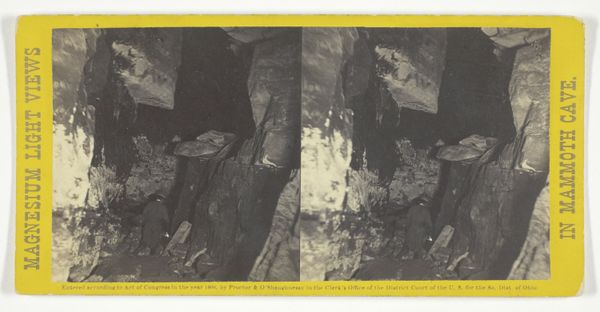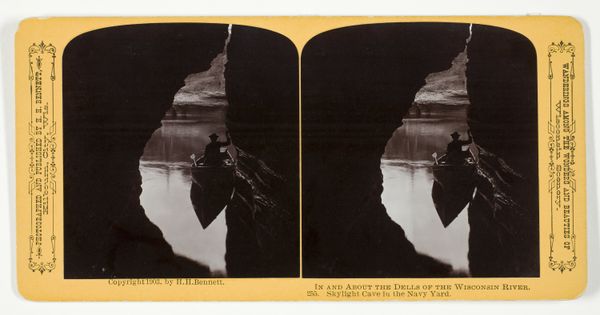
print, photography, gelatin-silver-print
# print
#
landscape
#
photography
#
ancient-mediterranean
#
gelatin-silver-print
#
history-painting
Dimensions: height 82 mm, width 115 mm
Copyright: Rijks Museum: Open Domain
Curator: What we have here is a 1929 gelatin-silver print photograph, titled "People at an Excavated Wall of Pharaoh Shishak" by Richard St. Barbe Baker. It depicts, as the name suggests, people working at an archeological dig site. Editor: It’s a striking composition. The monochromatic image really highlights the textures of the excavated earth and contrasts the landscape against the people down below. It conveys a palpable sense of manual labor in action. Curator: Indeed. This print serves not only as an artifact in itself but as a document reflecting both the landscape, human impact and the social circumstances surrounding this dig. The material reality of those unearthed walls becomes particularly prominent because of that starkness. The workers' dress, their apparent tools, tell a certain story about labour practices and resource management at the time. Editor: Absolutely. Think about how this scene functions as a historical record. These people digging – probably Egyptians – are literally unearthing their own past. And this photograph, as a reproduced image, then brings that process into a broader, potentially global context. The power dynamic there is quite intriguing, considering the role Western institutions often played in funding such digs, effectively controlling narratives about this history. Curator: Precisely. We should consider too, what was the source for Baker to create the photograph and make prints? The production itself creates a complex set of relationships here between labour, depiction and knowledge construction that has lasting material consequences. Editor: Yes, and what’s the museum's role now, in showing this particular depiction rather than perhaps others. It raises critical questions of whose version of history we choose to foreground. Curator: Exactly! It’s far more than a snapshot; it embodies interconnected layers. Editor: Definitely, it’s a compelling reminder of the intersection of history and representation.
Comments
No comments
Be the first to comment and join the conversation on the ultimate creative platform.
